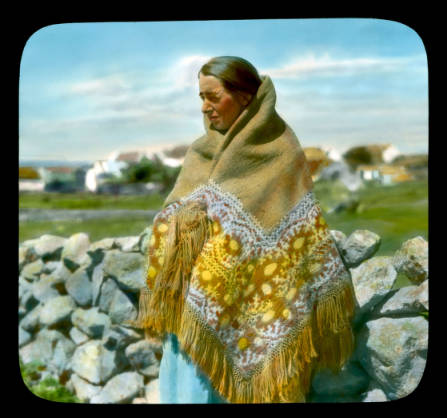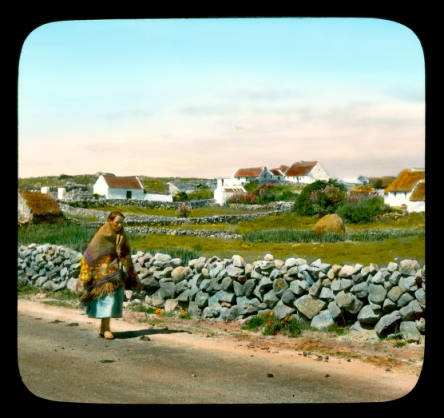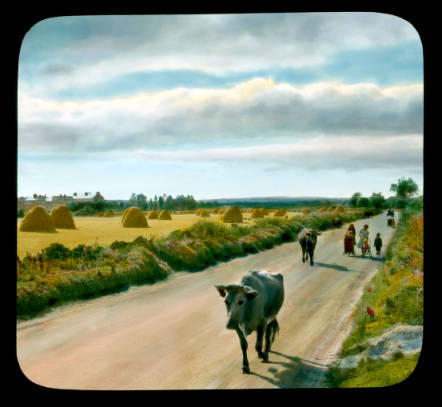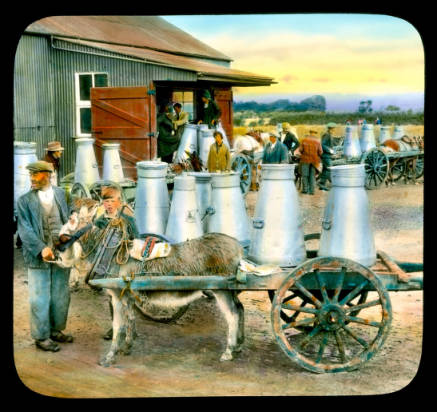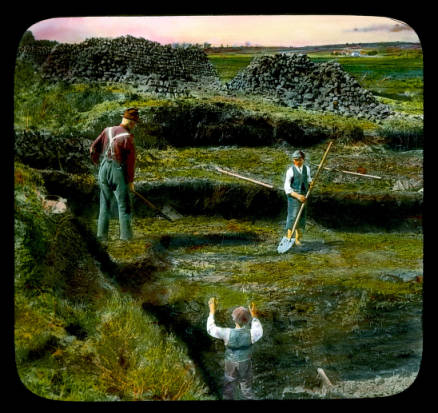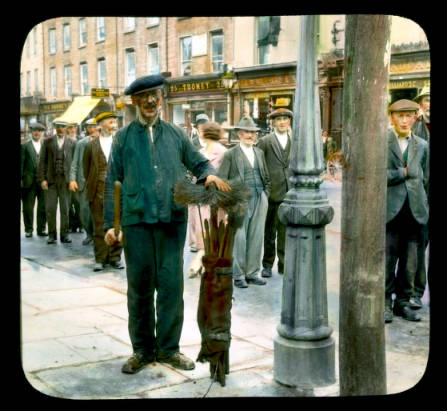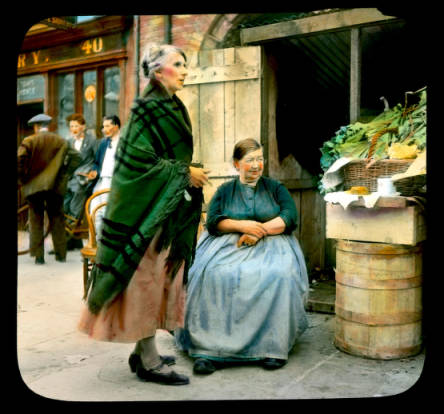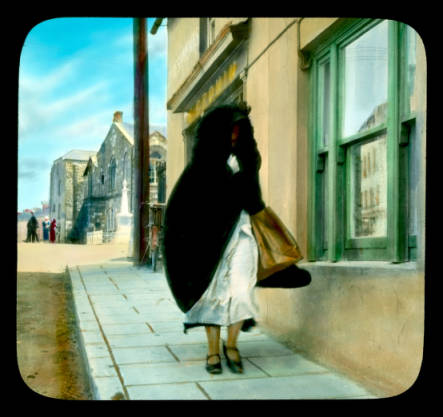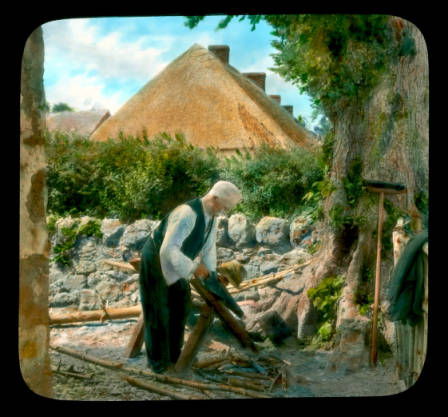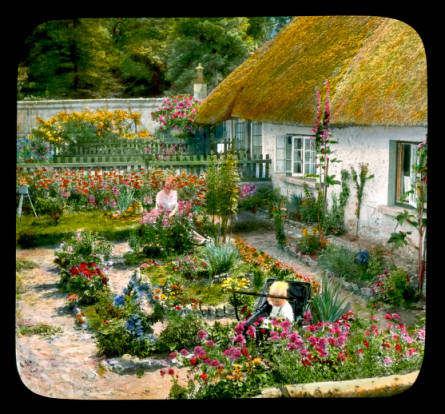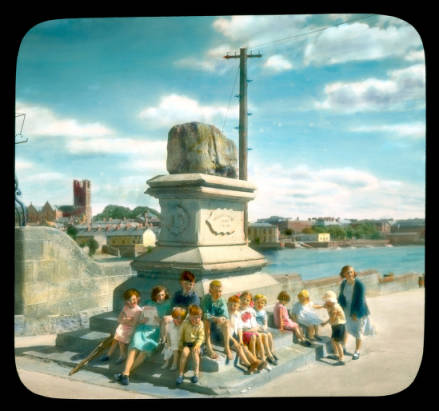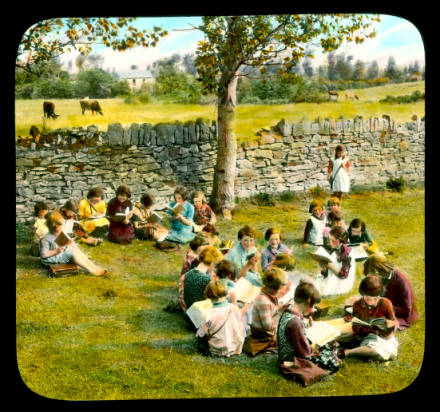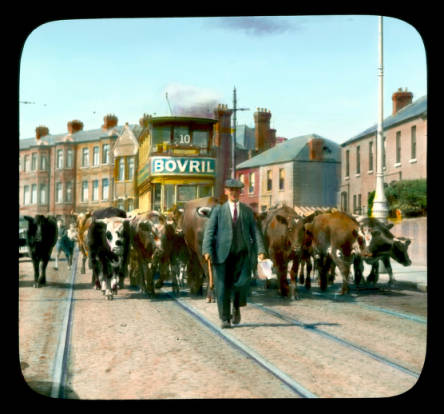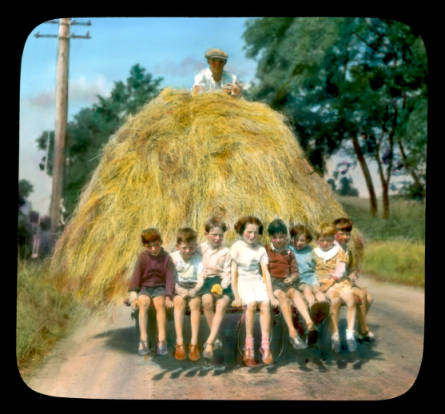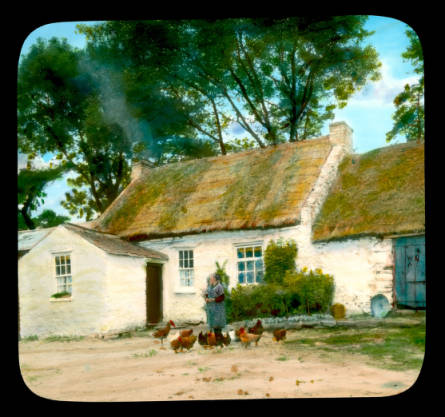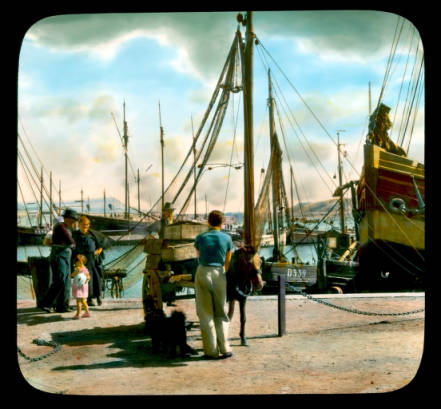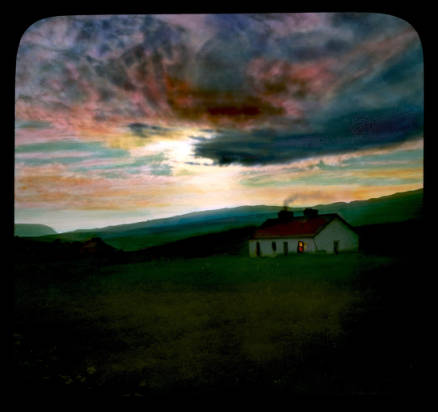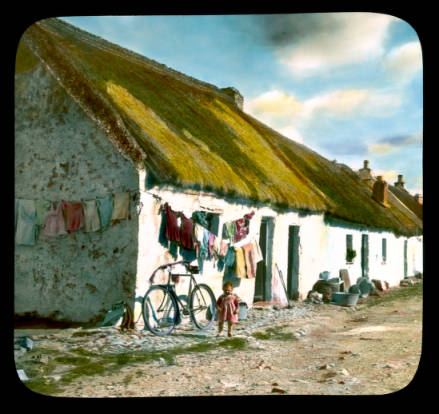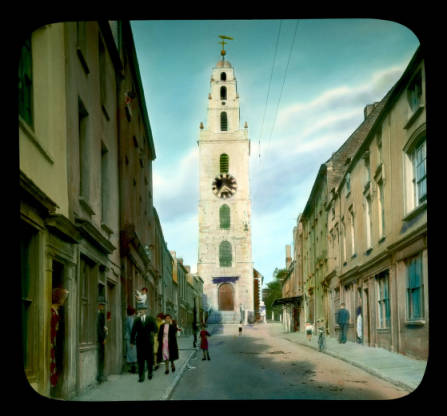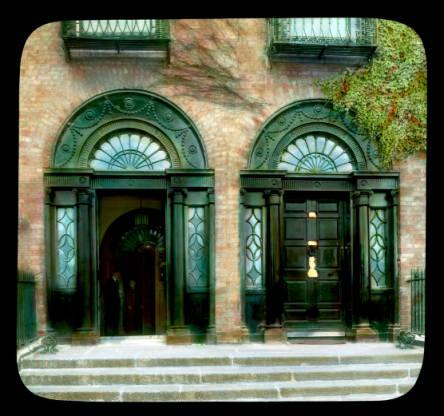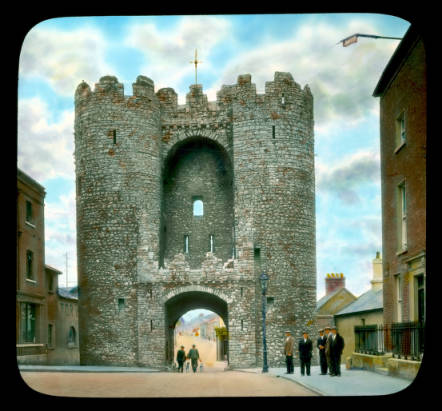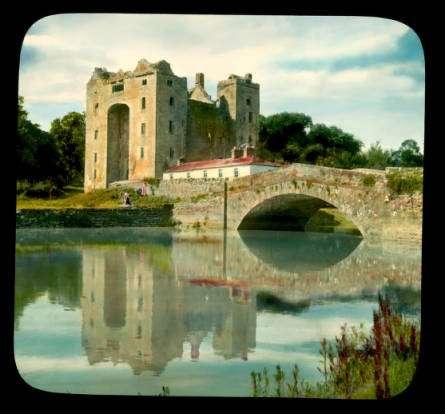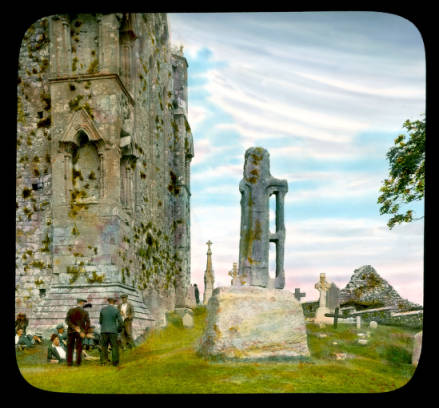
History & Heritage Skara Brae, on the island of Orkney, is the most complete Neolithic village in Europe. It is also the oldest building in Britain, dating from 3100 BCE. Aberdeen Harbour Board is Britain's oldest recorded business, founded in 1136. The University of St Andrews, founded in 1413, is the third oldest university in the UK after Oxford and Cambridge. It welcomed Britain's first female student in 1862. It is also here that the world's first students' union came into existence in 1882, while the world's oldest students' union building was the purpose-built Teviot Row at Edinburgh University, built in 1889. Established in 1498, the Shores Porters Society in Aberdeen is the world's oldest transport company. Scotland was an independent country until 1603. Then the king of Scotland became king of England (not the other way round), but the two country didn't merge their governments until 1707, to form the Kingdom of Great Britain. The Bank of Scotland, founded in 1695, is the oldest surviving bank in the UK. It was also the first bank in Europe to print its own banknotes, a function it still performs today. A Scot, William Paterson (1658-1719), was the instigator and a co-founder of the Bank of England. He later attempted, unsuccessfully, to establish Scotland's first colony, called 'New Caledonia', on the Isthmus of Panama to facilitate trade with the Far East. The post office at Sanquhar, established in 1712, claims to be the oldest working post office in the world. The town also has the world’s oldest curling society, formed in 1774 with sixty members. The Encyclopædia Britannica, the world's oldest surviving encyclopedia and one of the most scholarly of encyclopaedias, was first published between 1768 and 1771 in Edinburgh. The first nine editions (out of fifteen so far) were all edited in Scotland. From 1901 it was edited conjointly in New York City and London. In 1794 Scottish engineer William Murdoch built the first-ever house to be lit by gas. Henry Duncan founded the world's first commercial savings bank at Ruthwell, near Dumfries, in 1810. It effectively founded what would become the Trustee Savings Bank (TSB), now part of Lloyds TSB Bank. The world's first infant school was opened by philosopher and pedagogue Robert Owen in New Lanark in 1816. Edinburgh was the first city in the world with its own fire brigade, in 1824. The Open Championship, the oldest of the four major golf championships, was first played in 1860 at Prestwick Golf Club, in Ayrshire, and was staged there annually for the first 12 years of its existence. The only two other golf courses that have hosted the Open Championship, Royal Troon and Turnberry, are also located in Ayrshire. Forbes Magazine was founded in 1917 in New York by Scottish-born journalist Bertie Charles Forbes. Established in 1908, RAF Leuchars in Fife is the oldest continuously operating military air base in the world. 
St Andrews Golf Club, the birthplace of modern golf. 
Dundas House in Edinburgh, HQ of the Royal Bank of Scotland since 1825. Government & Politics The Scottish Parliament has been reconvened on 1st July 1999 for the first time after nearly 300 years of interruption. It had been dissolved when the Act of Union was signed in 1707. Although Scotland was never part of the Roman Empire (save for the southern Lowlands, which were under Roman occupation for 20 years under the reign of Antoninus Pius), Scots law has a basis derived from Roman law. One particularity of Scots law is that the criminal trial may end in one of three verdicts: 'guilty', 'not guilty', or 'not proven'. The "not proven" verdict may be referred to as the Scottish Verdict abroad. Scotland provided a fair share of British Prime Ministers, among whom we find William Ewart Gladstone, the only British PM to serve four separate times, and more recently Tony Blair (1997-2007) and Gordon Brown (2007-2010). Sports The modern game of golf originated in Scotland in the 15th century. First mentioned as 'gowf' in 1457, golf was originally played on a course of 22 holes. It was first reduced to 18 holes at the Royal and Ancient Golf Club of St Andrews in 1764, and other courses followed suit. St Andrews is dubbed the "home of golf" and exercises legislative authority over the game worldwide (except in the United States and Mexico). The Honourable Company of Edinburgh Golfers in Muirfield is the oldest organised golf club in the world. The club's records date continuously back to 1744. Muirfield Village in Columbus, Ohio, was founded by golf champion Jack Nicklaus, and named after Muirfield, East Lothian. The world's first international rugby match was played at Raeburn Place, Edinburgh on 27 March 1871, opposing Scotland to England. The world's first international football match, Scotland v England, took place on 30 November 1872 at Hamilton Crescent in Glasgow. From the time of its completion in 1903 until 1950, Hampden Park in Glasgow was the biggest stadium in the world with a capacity in excess of 100,000. In 1937, a Scotland v England match beat the all time record attendance (149,415 spectators) for an international football match in Europe. The record still holds to this day. The Glasgow Celtic were the first British football club to win the European Cup, beating Inter Milan at the 1967 final. Food & Drinks Scotland is reputed for its whisky, known outside Scotland as Scotch Whisky. What few people know is that whisky was invented in China, and was first distilled by monks in Ireland in the early 15th century before reaching Scotland 100 years later. Shortbread is Scotland's most famous biscuit. The most infamous Scottish dish is haggis, normally made with sheep's 'pluck' (heart, liver, and lungs), minced with onion, oatmeal, suet, spices, and salt, mixed with stock, and traditionally boiled in the animal's stomach for approximately an hour. Haggis may be a very ancient European recipe. Although it is not known where it originated, a similar dish was already mentioned in Greece some 2,500 years ago. Scottish dishes are well-known for their weird names, like Forfar Bridie (a meat pastry), Cock-a-leekie (soup), Collops (escalope), Crappit heid (fish dish), Finnan haddie (haddock fish), Arbroath Smokie (smoked haddock), Cullen Skink (haddock soup), Partan bree (seafood dish), Mince and tatties (minced meat and potatoes), Rumbledethumps, Skirlie... Sciences & Inventions Notable Scottish inventions include the method of logarithms (1614), tarmac (1820), the waterproof raincoat (1823), the hot blast furnace (1828), and the pneumatic tyre (1887). Scottish botanists and horticulturalists have had many plants named in their honour, including the brodiaea, briggsia, blaeria, dalzellia, douglasia, forsythia, fortunearia, gardenia, hopea, hunteria, irvingia, jacksonia, jamesonia, justicia, kerria, kirkia, lawsonia, lightfootia, livistona, leea, menziesia, parkia, parsonsia, patersonia, tolmiea, wightia, and wrightia. Just like whisky (see above), kilts, tartans and bagpipes aren't Scottish inventions. Kilts originated in Ireland. Tartans were found in Bronze-age or Iron-age Central Europe (Hallstatt culture) and Central Asia (Tocharian culture). Bagpipes might also be an ancient invention from Central Asia. Interestingly, genetic studies are now pointing that the mutation for red hair, which now reaches a world maximum in Western Scotland and Northern Ireland, may have originated in Central Asia too. This means that Scottish people may be (partly) descended from ancient people from Central Asia. The modern, rear-wheel driven bicycle was invented in 1839 by Kirkpatrick Macmillan, a blacksmith from Keir, Dumfries-shire. The pneumatic tyre was invented in 1845 by Robert William Thomson (1822-1873) from Stonehaven, Kincardineshire. It was re-invented in a more practical way in 1887 by another Scotsman, John Boyd Dunlop (1840-1921), founder of Dunlop Rubber, and whose brand of tyres survives to this day (now under the joint ownership of Goodyear and Sumitomo Rubber Industries). James Young Simpson discovered the anaesthetic properties of chloroform in 1847, and successfully introduced it for general medical use. Construction & Industry Rubislaw Quarry is Britain's the deepest quarry (142 m) and one of the biggest man-made holes in Europe. It closed in 1971 and is now partly filled with water. Wanlockhead Mines, in Dumfries and Galloway, possesses one of the greatest variety of minerals in Europe (lead, zinc, copper, silver and gold). Its gold is amongst the world's purest, at 22.8 carats, and was used to make the Scottish Crown Jewels, the oldest royal regalia amongst Europe's surviving monarchies. Dumbarton Castle has the longest recorded history of any stronghold in Great Britain. It was first mentioned in a letter from Saint Patrick to Ceretic Guletic, King of Alt Clut (present-day Dumbarton), in the 5th century, although the settlement dates back to well over 2,000 years. The Bell Rock Lighthouse, built off the coast of Angus between 1807 and 1810, is the world's oldest surviving sea-washed lighthouse. Erected in 1812, the Laigh Milton Viaduct, near Kilmarnock in Ayrshire, is the oldest surviving railway viaduct in Scotland, and one of the oldest in the world. It was used by the Kilmarnock and Troon Railway, Scotland's first public railway and the first to use a steam locomotive. The Ballochmyle Viaduct is the highest extant railway viaduct in Britain. When it was completed in 1848, it boasted the world's longest masonry arch (55m / 181 ft) of any railway bridge. The bridge featured in the 1996 film Mission Impossible starring Tom Cruise. William Denny and Brothers of Dumbarton and John Brown and Company of Clydebank were two of the most internationally renowned shipbuilding companies in the world from the mid 19th to the mid 20th century. They built world-famous ships, such as the Cutty Sark (the second fastest clipper of all time), the TS King Edward (the first passenger steamer powered by turbines), the RMS Lusitania (the fastest ship of its time), the HMS Hood (the world's biggest warship for 20 years after being launched), the HMS Repulse (the world's fastest capital ships upon completion), the RMS Queen Mary, the RMS Queen Elizabeth (the largest passenger liner ever built until 1994), and the RMS Queen Elizabeth 2. Clydebank used to be the greatest shipyard in the world. The Cathedral of the Isles in Millport, Cumbrae, is Britain's smallest extant cathedral and Europe's second smallest. Established by James Young in 1852, Bathgate Chemical Works in West Lothian was the world's first oil refinery. From 1865 to 1880, Young's Paraffin Light and Mineral Oil Company was the world largest oil producer. The Thermopylae, an extreme composite clipper ship built in 1868 by Walter Hood & Co of Aberdeen, is the fastest sailing boat ever built. Upon its completion in early 1878 the Tay Rail Bridge was the longest in the world, but was destroyed by a storm in December 1879. The second Tay Bridge, opened in 1887, was slightly longer, with a length of 4,500 m (14,800 ft), and remained the longest bridge in the world until 1903. is still Britain's longest bridge. The Forth Railway Bridge, opened in 1890, was the world's first major steel bridge. With a main span of 521 m (1,710 ft) and a total length of 2,529 m (8,296 ft), it is the second longest cantilever bridge in the world after Pont de Québec in Canada. When it was completed, the Forth Bridge was three times longer than any other bridge ever built. Mount Stuart, family seat of the Marqueses of Bute, contains the world's first indoor heated swimming pool. It was also the first house in Scotland to be lit by electricity. Marischal College in Aberdeen is the second largest granite building in the world after the royal residence and monastery of El Escorial near Madrid. The Dounreay Nuclear Power Station, in Caithness, became the world's first operational fast breeder reactor in 1957. The 112 metre-long transparent underwater viewing tunnel at Deep Sea World at North Queensferry, in Fife, is the longest of its kind in Europe, and one of the longest in the world. Glasgow Tower, completed in 2001, is the tallest tower in the world (127 m / 417 ft) in which the whole structure is capable of rotating 360 degrees. Opened in 2002, the Falkirk Wheel is the only rotating boat lift of its kind in the world, and is regarded as an engineering landmark for Scotland. 
The Falkirk Wheel, a a rotating boat lift connecting the Forth and Clyde Canal with the Union Canal. 
The Forth Rail Bridge, the world's second longest cantilever bridge. Economy Edinburgh is Europe's fifth largest financial centre. The Asda Walmart Almondvale Shopping Centre in Livingston is the largest of its kind in Europe. Scottish waters have some of Europe's largest oil reserve and Aberdeen is the centre of Europe's petroleum industry. The number of jobs created by the energy industry in and around Aberdeen has been estimated at half a million. The Sullom Voe Terminal in the Shetland Islands is Europe's largest oil and liquefied gas terminal. Scotland is a major producer of wool and wool textiles, and is famous around the world for its distinctive tweed cloth and Tartan patterns. Fraserburgh in Aberdeenshire is the largest shellfish port in Europe, landing over 12,000 tonnes in 2008. Producing their first blend in 1865, Johnnie Walker quickly became the world's leading whisky company. Now part of the Diageo group, the world's largest producer of spirits, Johnnie Walker remains the most widely distributed brand of blended Scotch whisky in the world. Glenfiddich became the first distillery to market single-malt whisky (as opposed to blended whisky) outside Scotland in 1963. It is now the world's best-selling single malt, sold in 180 countries, and accounts for about 35% of single malt sales. Strathisla is the oldest continuously operating distillery in Scotland. It was founded as the Milltown Distillery by George Taylor in 1789. The Herald, Scotland's leading newspaper, is Britain's and one of the world's oldest continuously-published English-language newspapers. It was first published on 27 January 1783 as the Glasgow Advertiser. Land & Nature Scotland has a comparable land area as the Czech Republic, the United Arab Emirates, Panama, the US state of Maine, or the Japanese island of Hokkaido. The latter (Hokkaido) has the most comparable climate and population density. Meikleour Beech Hedges, in Perthshire, the tallest and longest hedge on earth, reaching 30 metres (100 ft) in height and 530 metres (1/3 mile) in length. Scotland has some 790 islands, 130 of which are inhabited. The Gulf of Corryvreckan, in the Inner Hebrides, has the third largest whirlpool in the world. Bass Rock, 2 km off the coast of North Berwick, is the largest single-rock Gannet colony in the world, home to some 150,000 birds. The Lauder of The Bass family were the first recorded proprietors of the isle in the 11th century. Their crest is a Gannet standing upon a rock, attesting that gannets have been breeding there for centuries, if not millennia. St Kilda, the westernmost group of islands of the Outer Hebrides, has become completely uninhabited by humans since 1930. It is home to the world's second largest colony of Northern Gannets, totalling 30,000 pairs (24% of the global population), as well as 49,000 breeding pairs of Leach's Petrels (90% of the European population), and 136,000 pairs of Atlantic Puffins (30% of the UK's total breeding population). St Kilda has been granted World Heritage Site status in 1986, and is one of the few in the world to hold joint status for its natural and cultural qualities. It is in Sutherland that one can find both Britain's highest waterfall, Eas a' Chual Aluinn (200 m / 658 ft), and the highest sea cliffs on the British mainland, known as the Clò Mór cliffs (281 m / 920 ft). The UK's highest cliff is also located in Scotland, Conachair on St Kilda, which rises 427 metres above Atlantic Ocean. Inverness-shire, Scotland's largest county, is home to Britain's highest peak, Ben Nevis (1,343 m / 4,406 ft), Britain's deepest lake, Loch Morar (310 m / 1,017 ft), and Britain's second longest and second deepest lake, the famous Loch Ness. Lerwick, the capital of the Shetland Islands and Britain's most northerly town, lies roughly at the same latitude as the southern tip of Greenland or Anchorage in Alaska. 
Bass Rock, the world's largest single-rock Gannet colony. 
Ben Nevis in Inverness-shire, the highest mountain in the UK. People & Culture The Duke of Athol commands the only legal private army in Europe, the Atholl Highlanders, whose headquarters are at Blair Castle, Perthshire. Blair castle also has the distinction of being the last ever place in Britain to have been besieged, in 1746. Skibo Castle in Sutherland, Andrew Carnegie's former holiday retreat, has become the Carnegie Club, one of the world's most exclusive private clubs. Membership costs £20,000. The castle was the venues for quite a few celebrity weddings, including golfer Sam Torrance and the actress Suzanne Danielle in 1995, actor Robert Carlyle and his wife Anastasia Shirley in 1997, and most famously singer Madonna and film director Guy Ritchie in 2000. The Edinburgh Festival, a grouping of arts and cultural festivals taking place in summer, form the largest annual cultural festival in the world. The original component festivals are the Edinburgh International Festival and the Edinburgh Festival Fringe. The latter is in its own rightis the world's largest arts festival, with the 2011 event spanning 25 days totalling over 2,500 international shows from 60 nations in 258 venues. Scotland has three officially recognised languages: English, Scots (a relative of English) and Scottish Gaelic (a completely different language). Add to this Scottish English, which is English spoken with a more or less strong Scots accent and the occasional use of words from Scots or Scottish Gaelic. Scottish surnames are divided in two main categories : Gaelic names (typically starting with "Mac-" or "Mc-") and Germanic names (e.g. Barclay, Blair, Brown, Cumming, Hamilton, Hope, Howard, Hunter, Lawson, Livingstone, Park, Stewart...). Scotland is known as "Alba" in Gaelic. Scotland has only 5 million inhabitants, about 8.5% of the UK's population. About 5 million Americans reported Scottish ancestry. The highest concentration of people of Scottish descent are found in New England and in the North-West. Scottish place names in former British colonies and in the whole USA are found roughly in the ratio of one Scottish name to every four of English origin. Among major cities with Scottish names we find Houston, Dallas and Knoxville in the USA, Calgary and Hamilton in Canada, and Brisbane and Perth in Australia. There are over 40 locations around the world named Albany, derived from Alba (Gaelic for Scotland) and the title of Duke of Albany, 34 named Aberdeen and 22 called Dundee. The gardens of Dirleton Castle, East Lothian, have the world's longest herbaceous border (AmE : perennial border) at 215 metres (705 ft). Founded by Tibetan refugees in 1967, the Kagyu Samyé Ling monastery near Langholm, Dumfries and Galloway, is home to the largest Buddhist temple in western Europe. In 2004, Edinburgh became the UNESCO's first City of Literature. Famous people Scotland has spawned an amazing number of great thinkers and inventors for its diminutive size : Adam Smith, James Watt, David Hume, John Stuart Mill, Adam Ferguson, Sir Alexander Fleming, Alexander Graham Bell... Scottish literature includes such names as Sir Walter Scott, Robert Burns, Lord Byron, Robert Louis Stevenson, Sir Arthur Conan Doyle and J.K. Rowling. Famous Scottish actors include Sean Connery, Gerard Butler and Ewan McGregor. At least 6 US Presidents were of Scottish descent : Thomas Jefferson (1743-1826), James Madison (1751-1836), Andrew Jackson (1767-1845), James Knox Polk (1795-1849), William McKinley (1843-1901), Woodrow (Thomas) Wilson (1856-1924) Other famous Americans with Scottish ancestry include John Paul Jones (father of the American Navy), Thomas Edison (inventor), Ben Affleck (actor), Heather Locklear (actress) The two first Prime Minister of Canada, John A. Macdonald (1815-1891) and Alexander Mackenzie (1822-1892), were Scottish. Many Australian Prime Ministers were also of Scottish descent, like George Reid (1845-1918). Andrew Fisher (1862-1928), Stanley Bruce (1883-1967), or Robert Menzies (1894-1978). Check also List of greatest Scottish people in history source: www.eupedia.com |


















